Fernandina volcano erupts, lava flow reaching the ocean, Galapagos
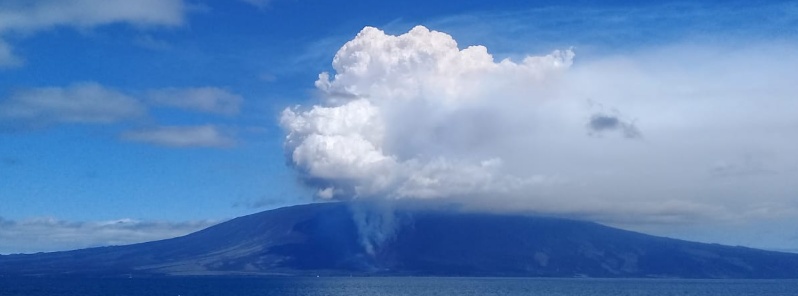
A new eruption started at Fernandina volcano (Cerro la Cumbre) in Ecuador around 15:00 UTC on June 16, 2018, IGEPN reports. This large shield volcano is a part of Galapagos volcanic archipelago. Its last eruption occurred in September 2017.
The eruption is taking place on the north-northeast flank of the volcano and is so far characterized by the emission of lava flows and a gas column rising up to 3 km (1.8 miles) and drifting southwest.
According to the personnel of the Galapagos National Park, the lava flow has already reached the ocean.
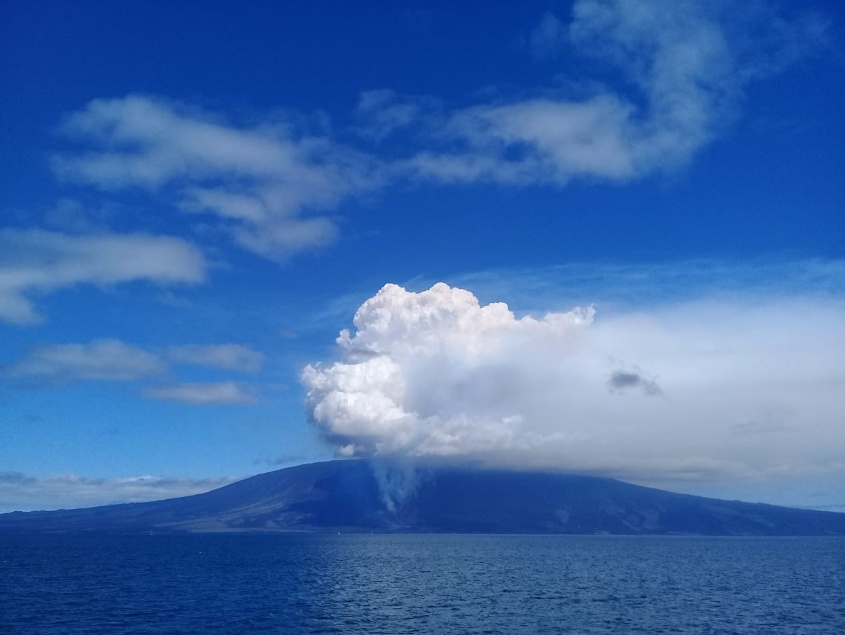
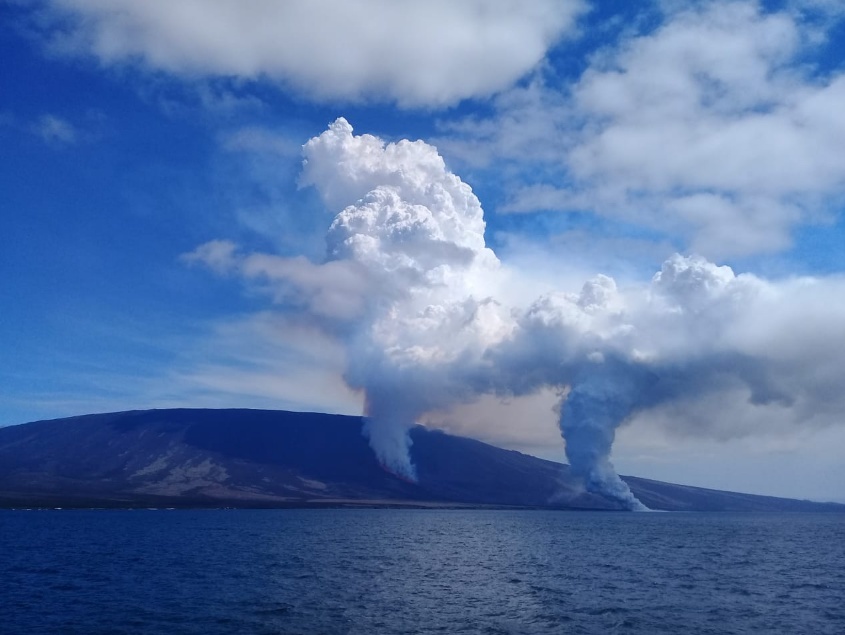
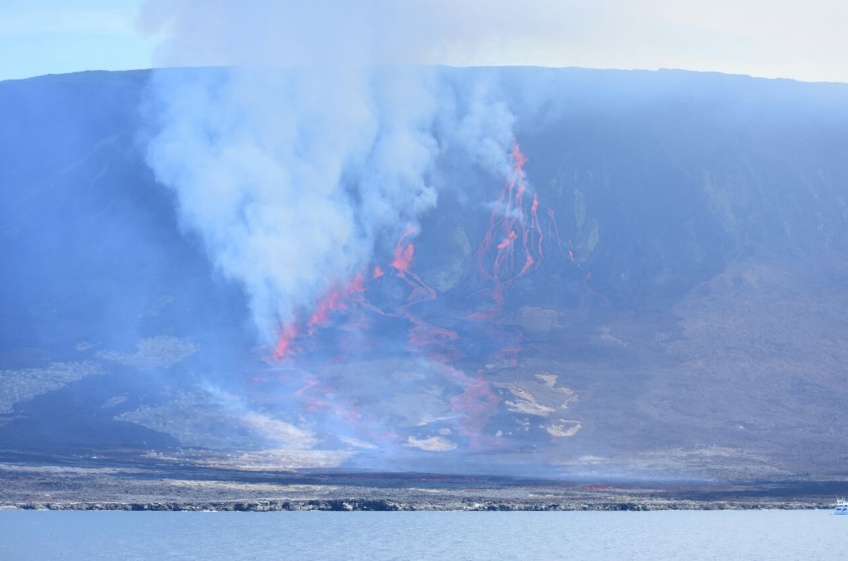
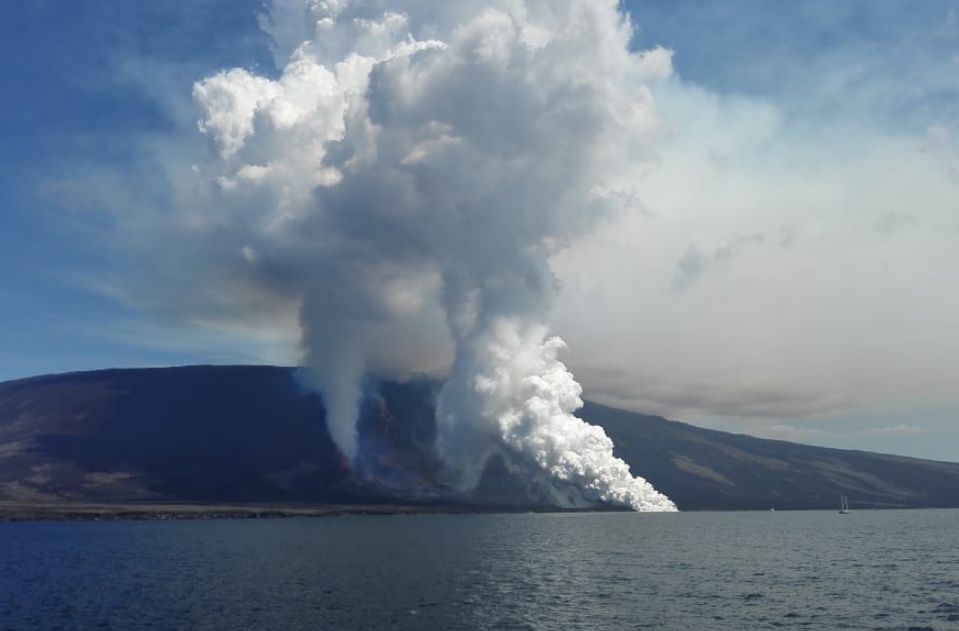
The eruption of Fernandina volcano on June 16, 2018. Credit: Sabina Estupiñan, Marcelo Izquierdo and Daniel Muñoz
There are no human settlements in the area of the eruption and until IGEPN's latest report on June 16, there was no evidence of ash emission.
The agency is advising residents and tourists to stay away from the area in eruption and in particular from the area where lava flows are entering the ocean due to possible explosions and a large amount of toxic gas.
The eruption was preceded by a swarm of earthquakes, with the first one at 12:37 UTC on June 16.
Volcán La Cumbre, en la isla Fernandina, #Galápagos entra en nuevo proceso de erupción. Reportes de guardaparques del Canal Bolívar y operadores turísticos en la zona manifiestan actividad en el flanco norte.
Imagen créditos: @IGM_Ecuador pic.twitter.com/WP4m1ASpmV— Parque Galápagos (@parquegalapagos) June 16, 2018
Volcán La Cumbre en #Galápagos entra en erupción. Lea más en https://t.co/nVKAfuO1E7 pic.twitter.com/xnbiYIr6bJ
— Parque Galápagos (@parquegalapagos) June 16, 2018
Una de las primeras captaciones de la erupción del volcán La Cumbre, en la isla Fernandina, Parque Nacional #Galápagos, #Ecuador
(Video de Felipe San Miguel, Yate Pinta)@parquegalapagos @flarenasec pic.twitter.com/iWONlujelS
— Jaime Plaza (@jplazaecu) June 16, 2018
#Galápagos | La erupción del volcán La Cumbre , en la isla Fernandina, vista desde otro ángulo.
( Cortesía: Dries Deguel, guía turístico) @tomebamba @parquegalapagos @JBardellini pic.twitter.com/zugkCUbtwg
— Jaime Plaza (@jplazaecu) June 16, 2018
Geological summary
Fernandina, the most active of Galápagos volcanoes and the one closest to the Galápagos mantle plume, is a basaltic shield volcano with a deep 5 x 6.5 km (3.1 to 4 miles) summit caldera. The volcano displays the classic "overturned soup bowl" profile of Galápagos shield volcanoes.
Its caldera is elongated in a NW-SE direction and formed during several episodes of collapse. Circumferential fissures surround the caldera and were instrumental in the growth of the volcano. Reporting has been poor in this uninhabited western end of the archipelago, and even a 1981 eruption was not witnessed at the time.
In 1968 the caldera floor dropped 350 m (1 148 feet) following a major explosive eruption. Subsequent eruptions, mostly from vents located on or near the caldera boundary faults, have produced lava flows inside the caldera as well as those in 1995 that reached the coast from a SW-flank vent.
The collapse of a nearly 1 km3 (0.24 mi3) section of the east caldera wall during an eruption in 1988 produced a debris-avalanche deposit that covered much of the caldera floor and absorbed the caldera lake. (GVP)
Featured image: The eruption of Fernandina volcano on June 16, 2018. Credit: Sabina Estupiñan, Marcelo Izquierdo and Daniel Muñoz

I was on the my Daphnesailing towards fernandina just afer the eruption started at around 1230. At a distance we thought it was a fire but as we approached we realised that it was an eruption. We stayed near to the shoreline unit the lava hit the sea and caused the huge steam cloud.
We returned after dark to see spectacular scenes of rivers and spouts of lava spewing from fissures. Truly remarkable!
Thanks for reporting.